Plaster bulges that are showing worsening cracks, crumbling, and large deflections like seen in the photos below is an evolving emergency situation that requires immediate attention to minimize damage to both the structure and your belongings. The pillowing effect is most often seen on rocklath ceilings, and sometimes on drywall ceilings. We recently did a job in Cheektowaga that had a pillowed drywall ceiling. The pillowing on plaster ceilings is (from what I am told) caused by not allowing the plaster basecoat adequate time to dry, prior to applying the plaster finish coat which warps the rocklath panels. Then, gravity takes over after 80 years and you some times end up with this expensive situation.
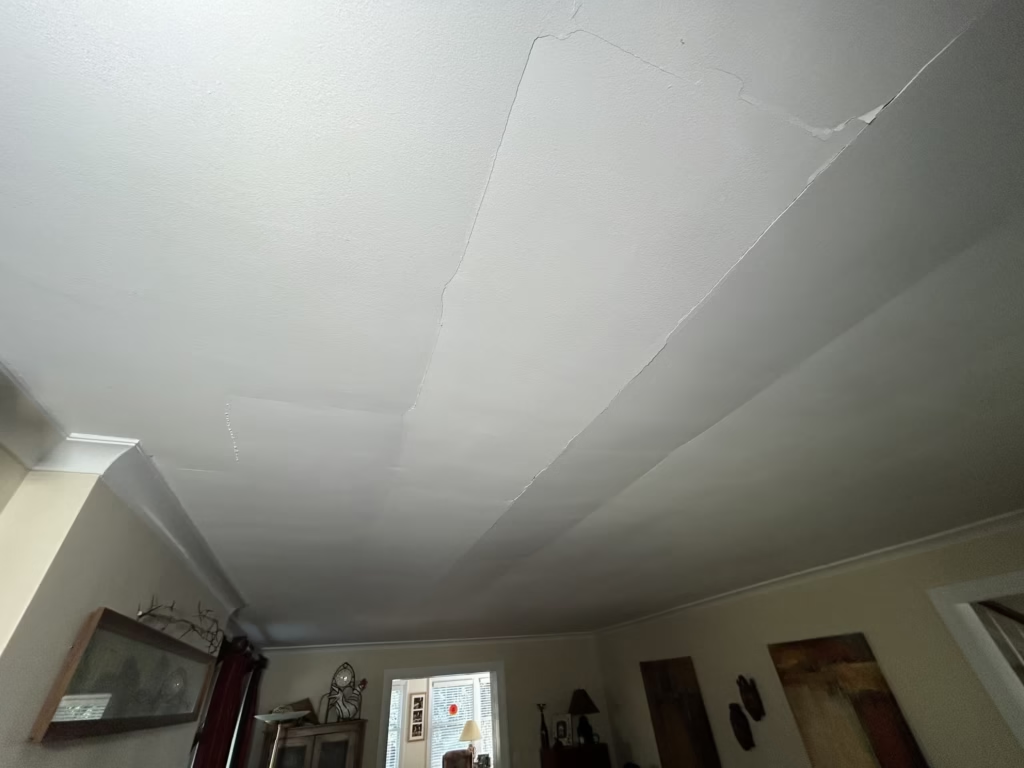
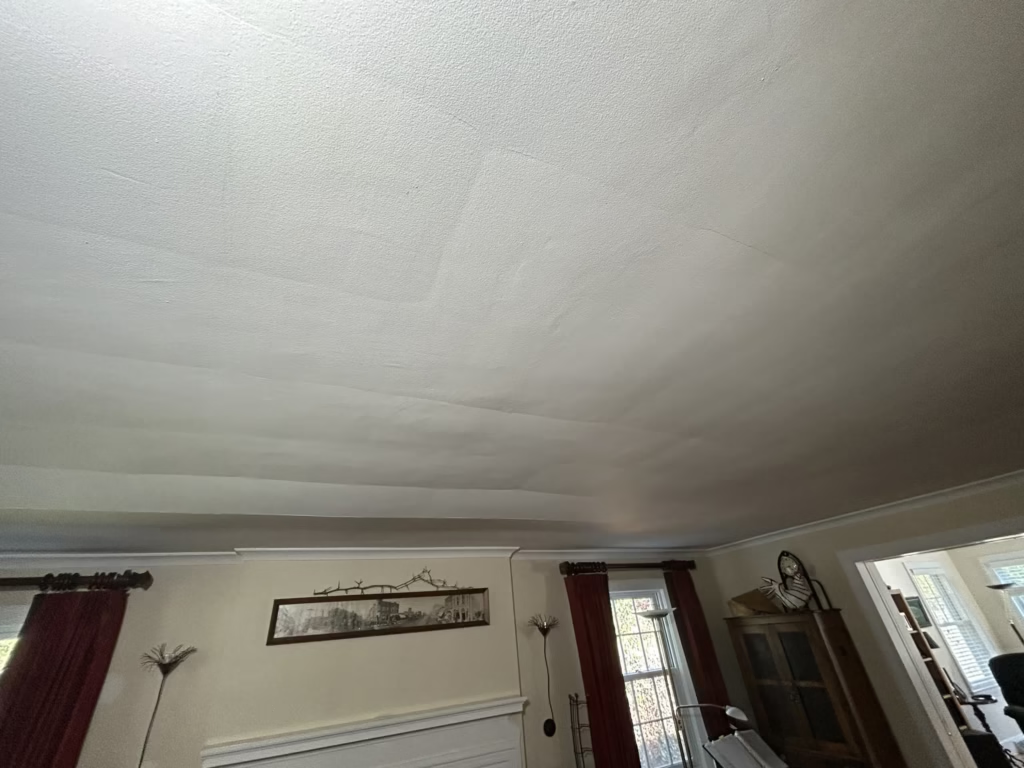
The large plaster bulge that is 3′ wide by 16′ long is no longer attached to the ceiling. The reason it hasn’t fallen off the ceiling is due to the rigidity of the plaster itself. But make no mistake, if this were to drop, any furniture under it would be seriously damaged, if not destroyed. One piece 18″ wide x 2′ long weighs in at around 20-30lbs with nails sticking out of it.
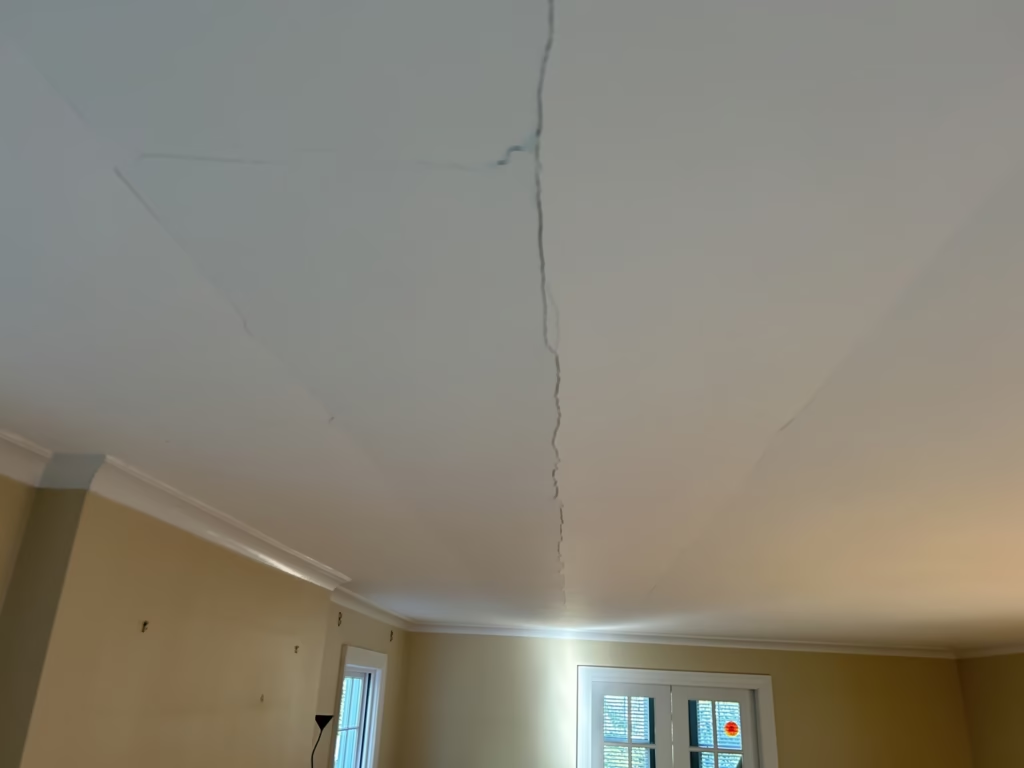

We come across these types of ceilings on occasion, and while I try hard not to scare people, it is important for homeowners to understand that if the ceiling collapses prior to us getting there, it will destroy what ever is under it. In this case, the homeowners removed everything from the room.
The homeowners were going out of town for 2 weeks so we couldn’t start right away, so I protected the floor with what I had on the truck.
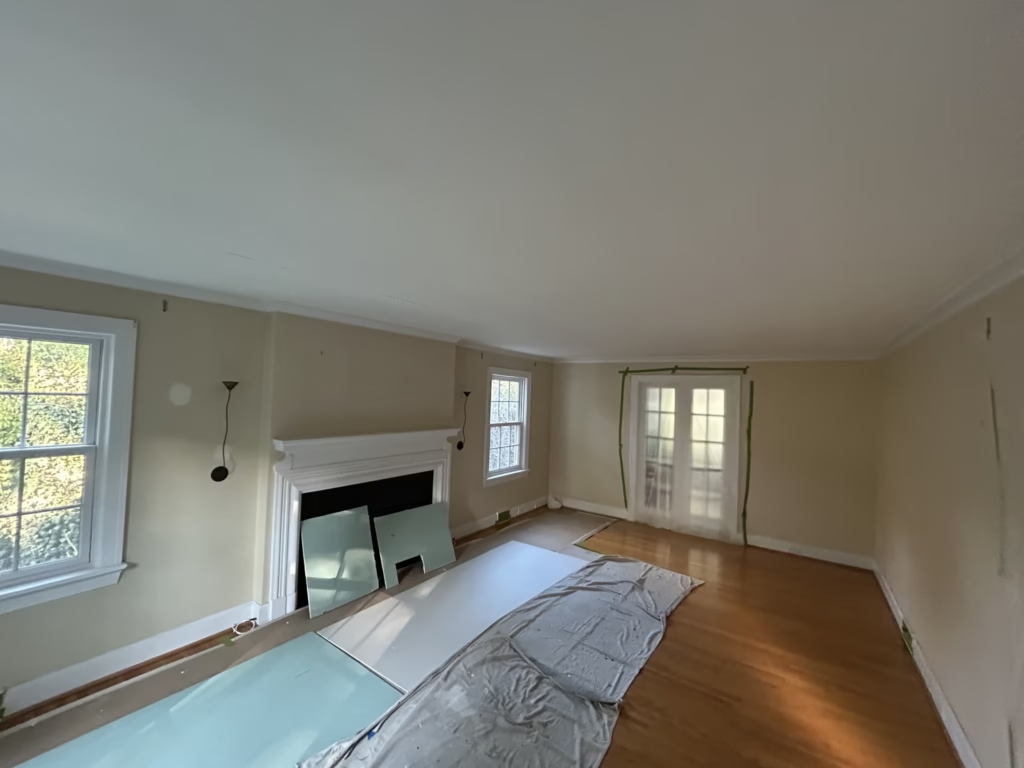
Today we laid down RamBoard over the hardwood floor, and baseboards, then laid down OSB sheeting over the ram board to protect the floor from falling plaster, which is very heavy and can easily damage any interior floor.
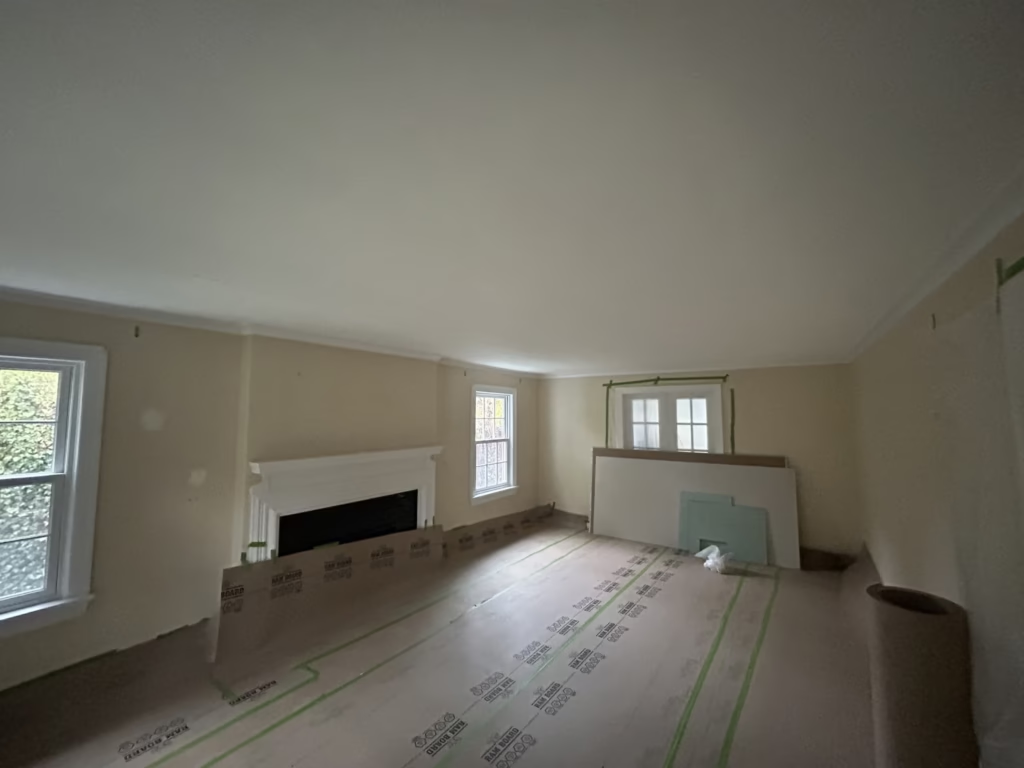
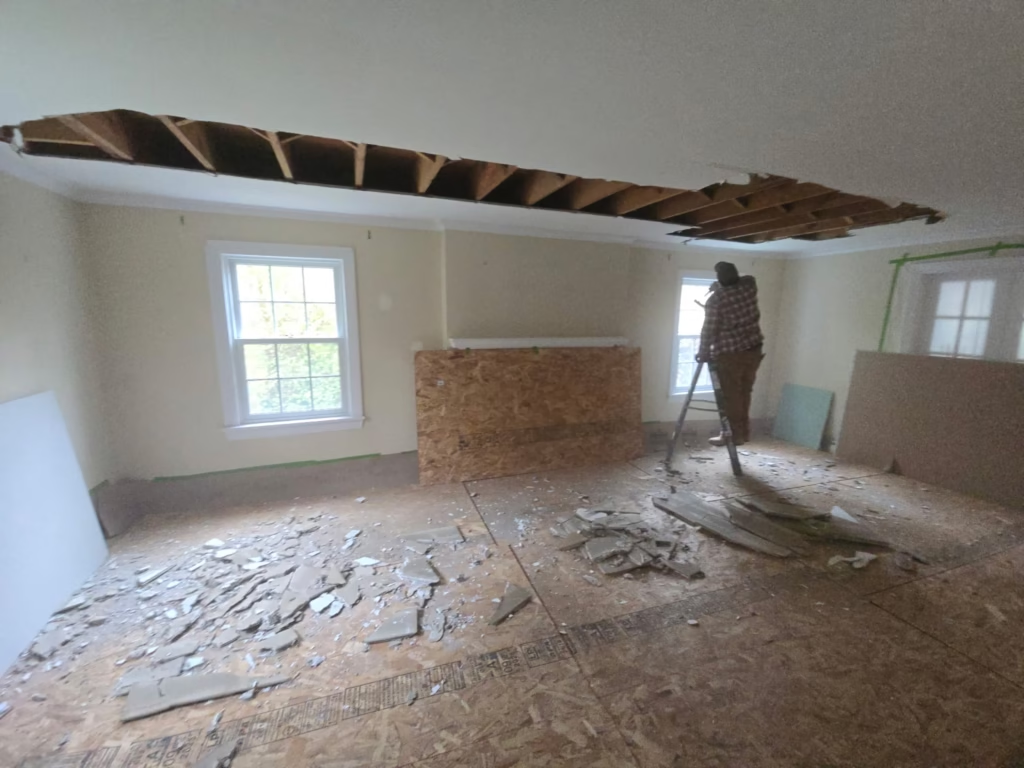
Once the floor was fully protected, we hung plastic over the doorways to help contain the dust and dirt. After which I began by punching a hole (carefully) into the ceiling, to open up an area so I could safely work, then began the methodical removal of the plaster ceiling piece my piece.
While parts of the ceiling were still attached to the ceiling joists, large sections were not with up-to 3″ gaps between the rocklath and the ceiling joists. A worsening situation indeed. And to think two other drywall contractors they met with wanted to go over this ceiling with drywall! Yikes! This plaster ceiling weighs in at around 3,000lbs, expecting a bunch of hard, brittle drywall screws with a head the size of a #2 pencil eraser to hold a failing plaster ceiling is a big ask. It’s our opinion doing that is dangerous, and not safe.
What will eventually happen is endless nail-pops, cracks that can’t be repaired, and constant ceiling repairs to fix the band-aid. While it is expensive, its easier, safer, and cheaper in the long run to simply remove the failing plaster ceiling, and install drywall. But remove the plaster ceiling first. The plaster ceiling is already moving, drywall screws will not stop it, just delay the inevitable.
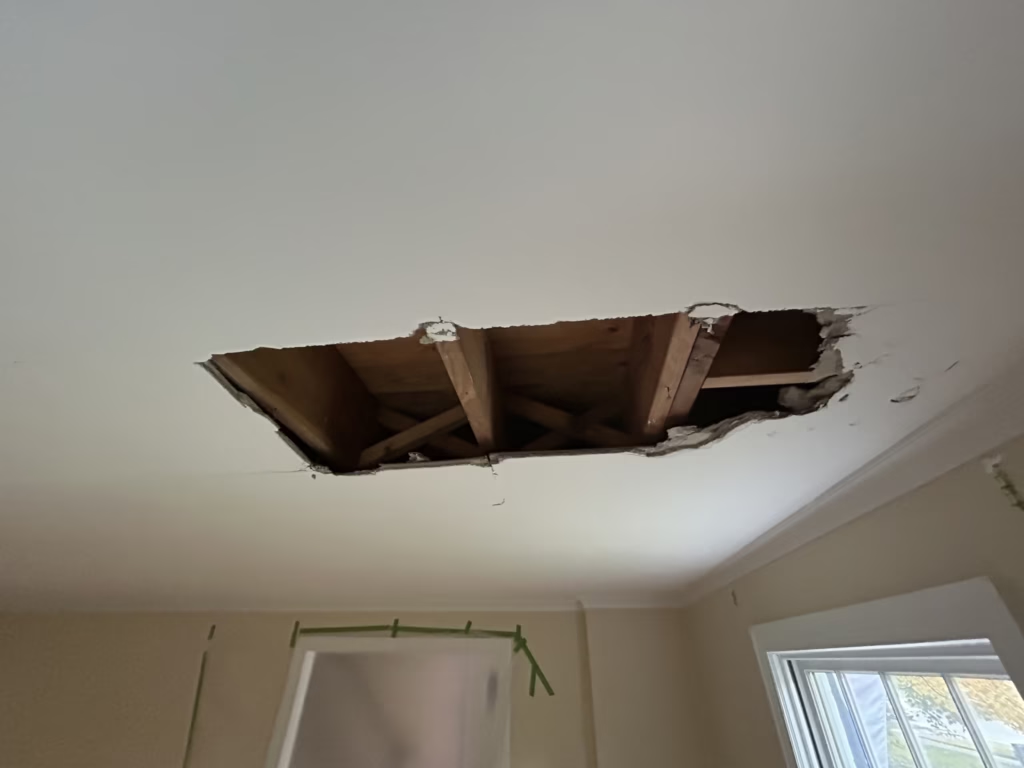
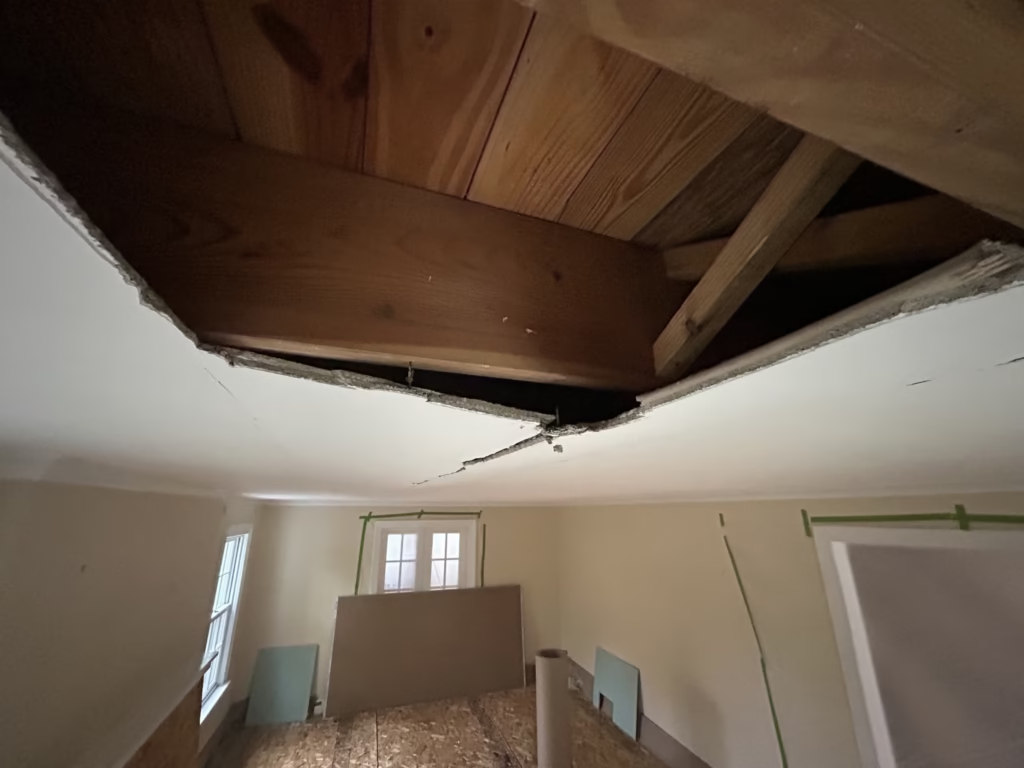
It is important to try not to touch the ceiling if its ‘stable’ until all the protection is in place, and then, using a hatchet (not a hammer) punch a hole in the ceiling to stand under and then work your way out from there. This prevents plaster falling on you. Your using a hatchet because you don’t want to cause vibrations in the plaster that could cause it to suddenly collapse – bad. The goal here is to methodically remove the plaster in a very controlled fashion so as to prevent damage to the structure or worse – injuries to yourself! These plaster ceilings are extremely heavy, and care must be taken.
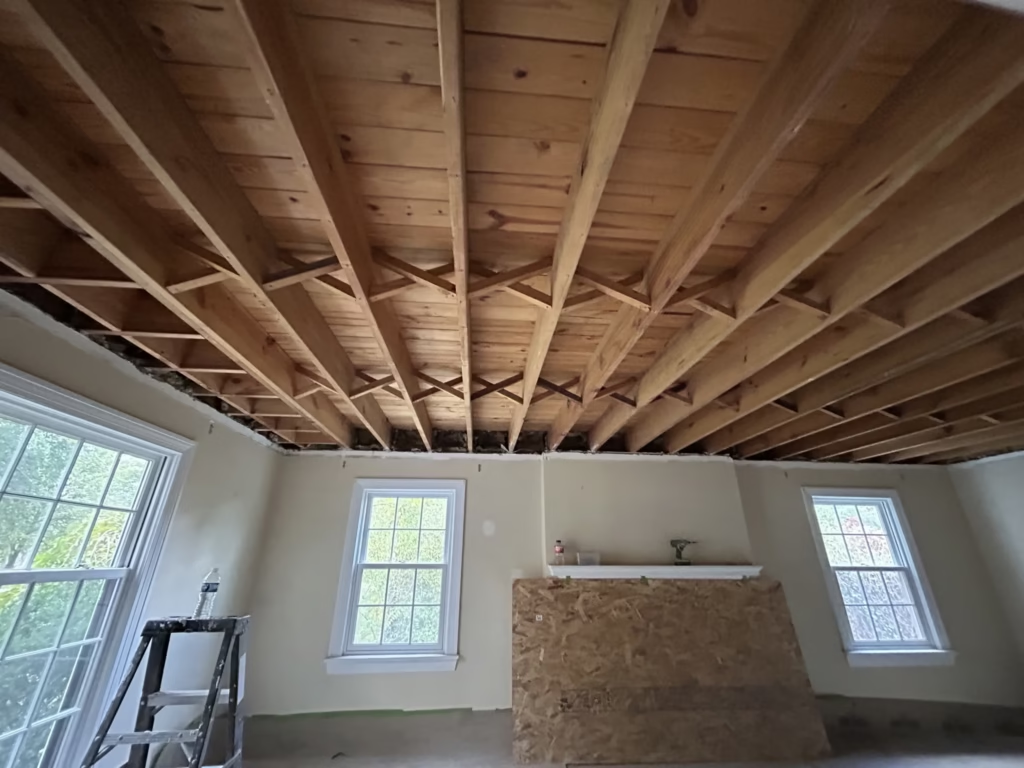
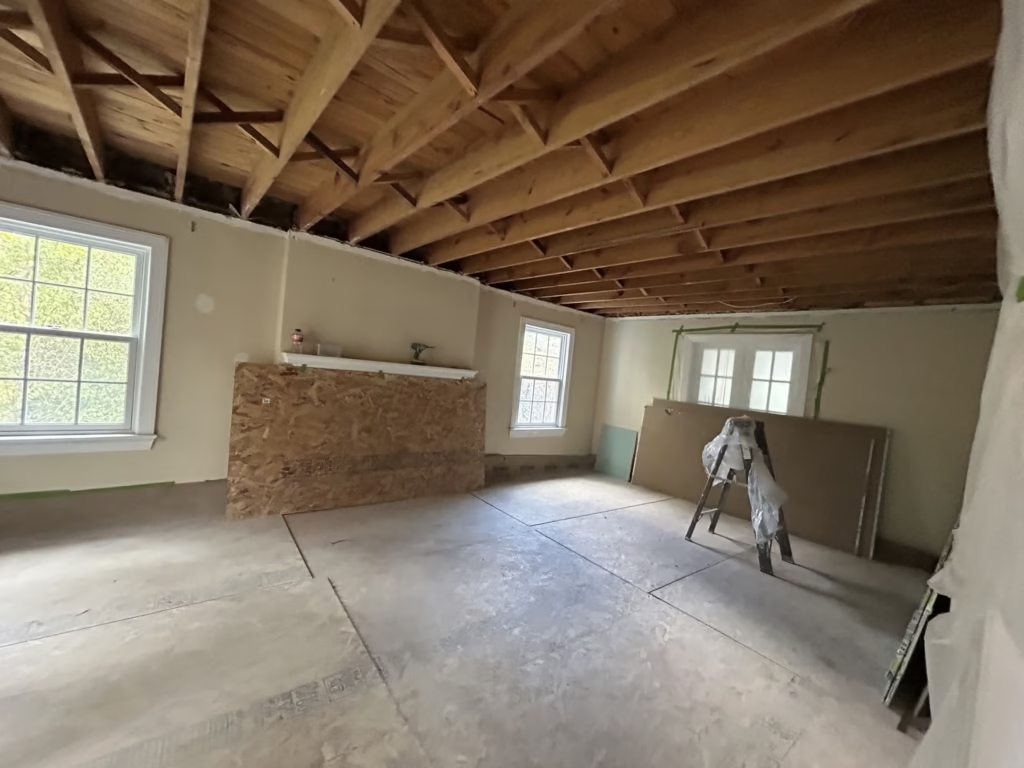
Once the plaster ceiling was down, and the debris cleaned up, we began bringing in the drywall and hanging the sheetrock per the manufacturers directions.
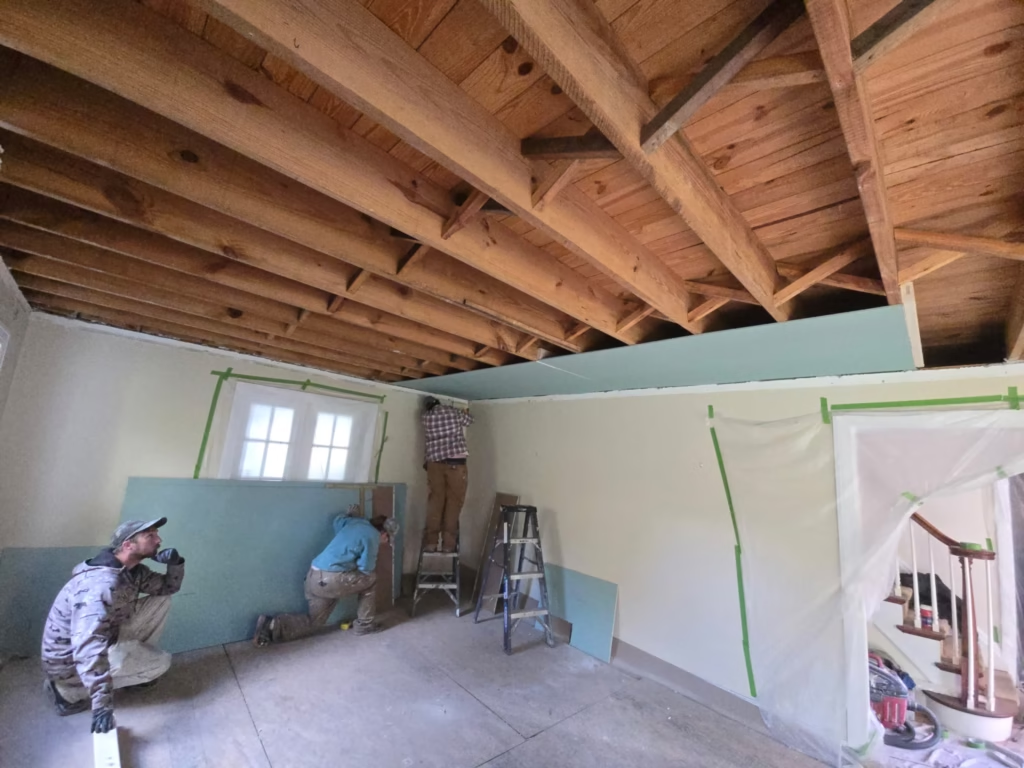
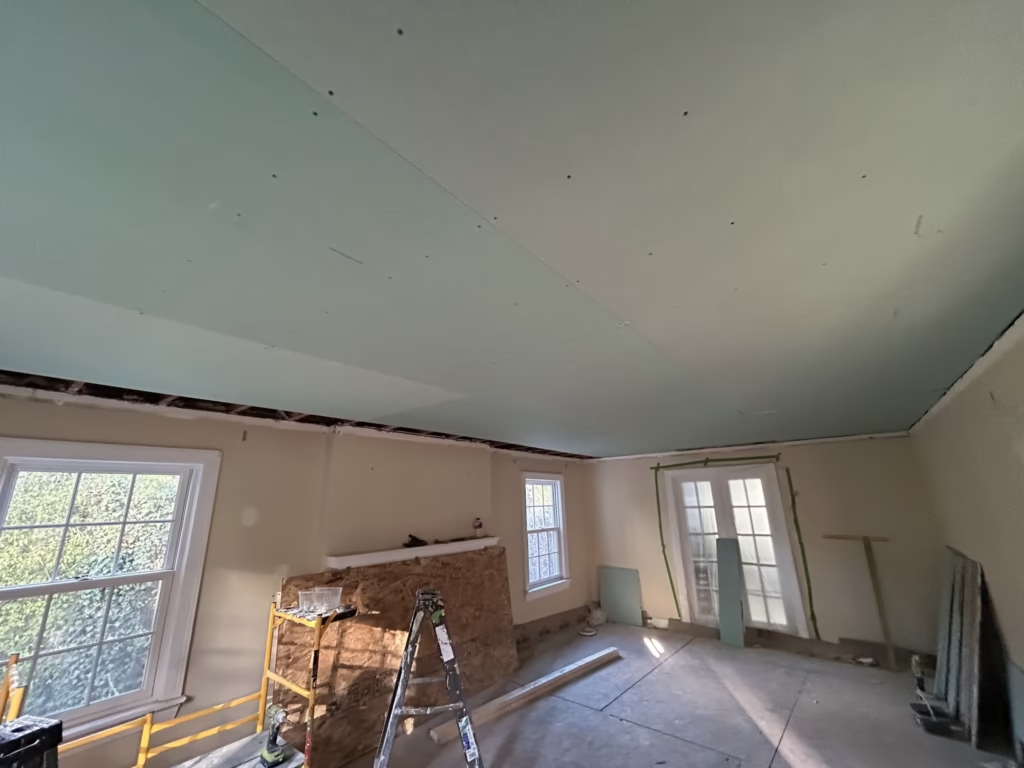
More to come!
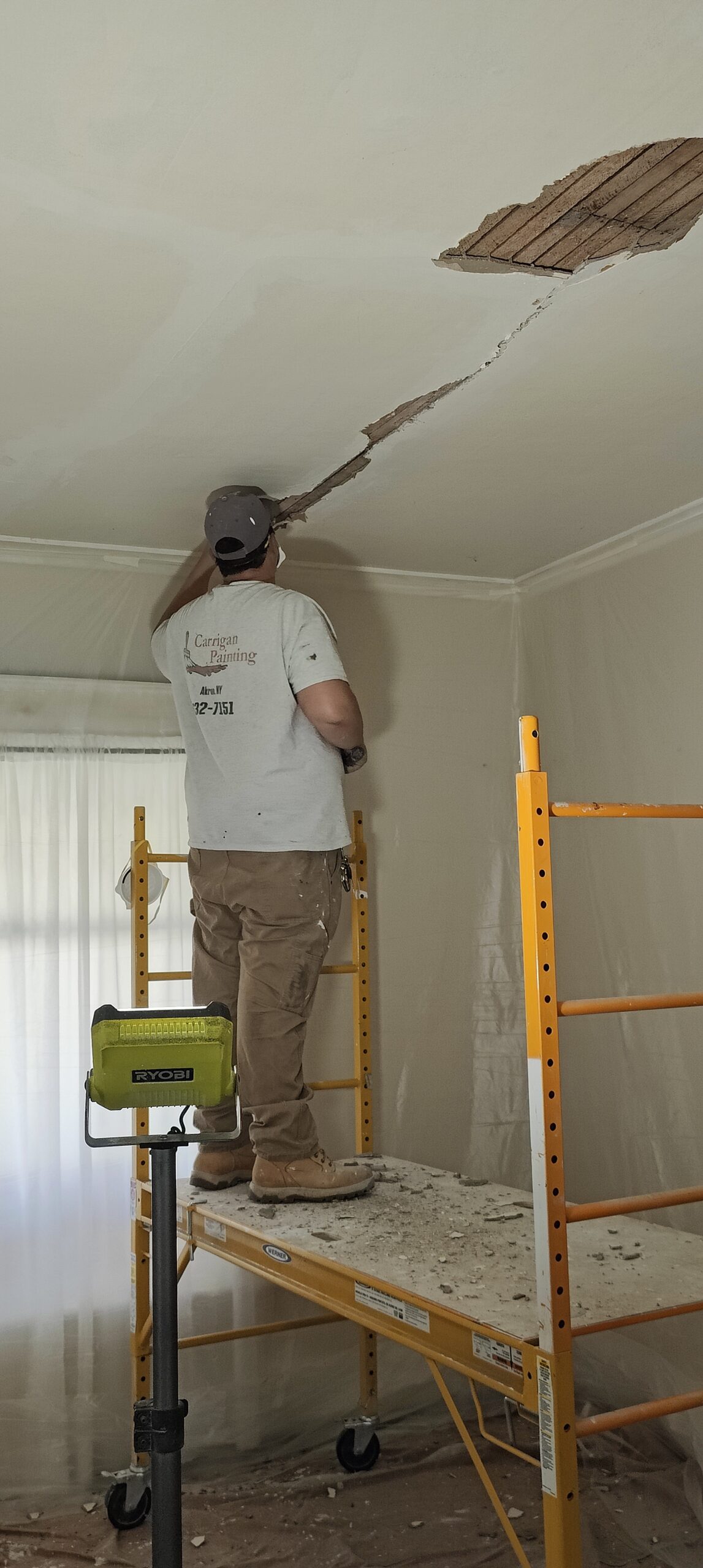
As the author of The Carrigan Archives, Dave shares expert insights on home improvement, ceiling restoration, and industry trends. He also personally manages Carrigan Painting’s website and YouTube channel, providing homeowners with valuable resources and a firsthand look at the company’s craftsmanship.
With over 25 years of experience in residential construction, Dave specializes in ceiling repairs and high-end interior painting, often exceeding contractual obligations to ensure the highest level of craftsmanship. His ability to maintain exceptional customer satisfaction in such a demanding field is a testament to his expertise, integrity, and dedication to quality.
For 15 consecutive years, Carrigan Painting has maintained an unprecedented 5-star reputation—an achievement nearly unmatched in the industry.
Almost all of the work we have completed since early 2024 has been posted to this Archive.
We do not believe in using AI to create content when we create amazing content every day.
Explore the Largest Portfolios in WNY:
🔹 Interior Painting | 🔹 Ceiling Repairs | 🔹 Plaster Repair | 🔹 Drywall Repair
Frequently Asked Questions – Answered.
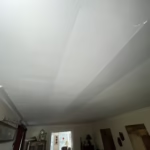


Leave a Reply